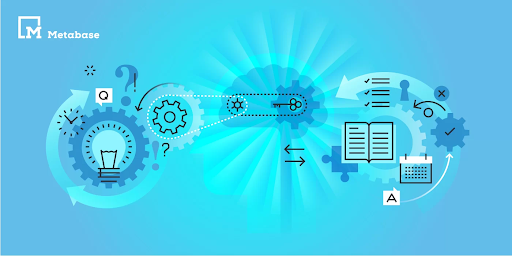
What Database Does Metabase Use?

What Is Metabase Used for?
Metabase is an open-source business intelligence (BI) and data visualization tool that allows users to create, share, and analyze data dashboards and reports. It provides a user-friendly interface that enables non-technical users to explore and visualize data without the need for complex SQL queries or programming skills.
Metabase has various use cases. For example, it creates dashboards rich KPIs and other critical metrics used in an organization. The platform also gives vital updates to these metrics.
Metabase also allows users to share performance indicators, objectives, and results.
It also performs real-time analytics. Users can share the results of these analytics with their team members. This allows team members to keep track of key performance indicators. It also makes explorative analysis easier.
What Database Does Metabase Use?
- The Metabase interface is based on SQL.
- Metabase also integrates with other databases and data warehouses. These include Mongodb, BigQuery, Spark, Amazon, Snowflake, Redshift, and Postgresql.
Problems with Metabase
- Metabase is a good, popular open-source BI tool that anyone can quickly install on your local environment to get a simple BI system up and running.
When your analytics needs grow, you might face some of these pain points when using Metabase:
Metabase only works well with a single SQL data source. If you have data from multiple sources, Metabase likely won't work well for you since it doesn't allow joining of data. With Metabase, you can only work directly with your database tables because everything in Metabase is designed for simplicity.
In this post, we'll share with you a few alternative options to that, and tell you which pain points of Metabase each of these alternative addresses. So depending on your needs you might be able to pick the right option to replace, or use alongside with Metabase.
Top 4 Metabase Alternatives
1. Holistics
Holistics is a nice BI alternative to Metabase. It works similar to Metabase in a way that it allows you to map your database tables into models and relationships, and expose this to the end business users to "self-service explore". For more information on how Holistics work, check out the mechanisms.
Holistics allows Data teams to define metrics once at the semantic (data modelling) layer, without repeating themselves or re-writing SQL queries. This semantic layer allows non-technical users to create their own charts, without writing SQL.
Pros (compared to Metabase):
- A stronger data modeling layer that allows handling sophisticated raw data.
- Business users can ask more sophisticated questions using their Explore interface.
- Works well with non-SQL data sources as they offer a mini-ETL experience with common sources (MongoDB, Google Analytics, etc)
- Have an in-built DAG-like transformation layer so that you can transform raw data into aggregated datasets before exploration
- Cloud-based so it doesn't take time to setup.
- Analytics As-Code: lets you write code (DSL) to define your analytics logic, and check them into Git version control. This makes analytics process more maintainable and streamlined.
Cons (compared to Metabase):
- Might not look as visually appealing as Metabase
Pricing:
- Plans start from $100 per month.
2. Tableau
Tableau is considered the best tool when it comes to visualization (prettiness) as it's their primary focus. Tableau was acquired by Salesforce in 2019.
Pros (compared to Metabase):
- Pretty visualization (best in their class)
- Friendly for business users to build your own chartings
- Work with a wide range of data sources
Cons (compared to Metabase):
- To design charts effectively you need to use their Desktop version
Pricing:
- Based on user roles (Creator, Explorer, Viewer) with minimum commitment required.
- They have a Free desktop version if you're publishing the reports publicly.
3. PowerBI
Coming out of Microsoft and with a strong history of Excel and PowerPivot, PowerBI is a fine choice to replace Metabase. They also have the ability to load custom visualization.
Pros (compared to Metabase):
- Their explorer interface is comprehensive for end-business users to work with.
- They offer from loading data from multiple sources, to drag-and-drop transform UI, to visualization.
Cons (compared to Metabase):
- We suspect if you're more inclined towards SQL-backed data reporting like Metabase, you might not like Microsoft-style, Excel-like, proprietary approach of PowerBI.
- PowerBI Editor can only run on Desktop running Windows. (that's why we wrote a post on how to use PowerBI on Mac devices)
Their best practice requires you to host your data into PowerBI servers, i.e duplicating your data into their server.
4. Looker
Looker (now part of Google) is quite a good BI tool to replace Metabase, but only if you're a big organization with a large budget.
Pros (compared to Metabase):
- Have a custom-built DSL layer (called LookML) to perform mapping between database tables and business logic, thus it's more flexible and customizable.
- Have an in-built transformation layer so that you can transform raw data into aggregated datasets before exploration
- Cloud-based so it doesn't take time to setup (as compared to Metabase)
Cons (compared to Metabase):
- Since they use their own DSL language to model data, it takes quite a learning curve to get started.
- It's also expensive and meant for large-scale deployment